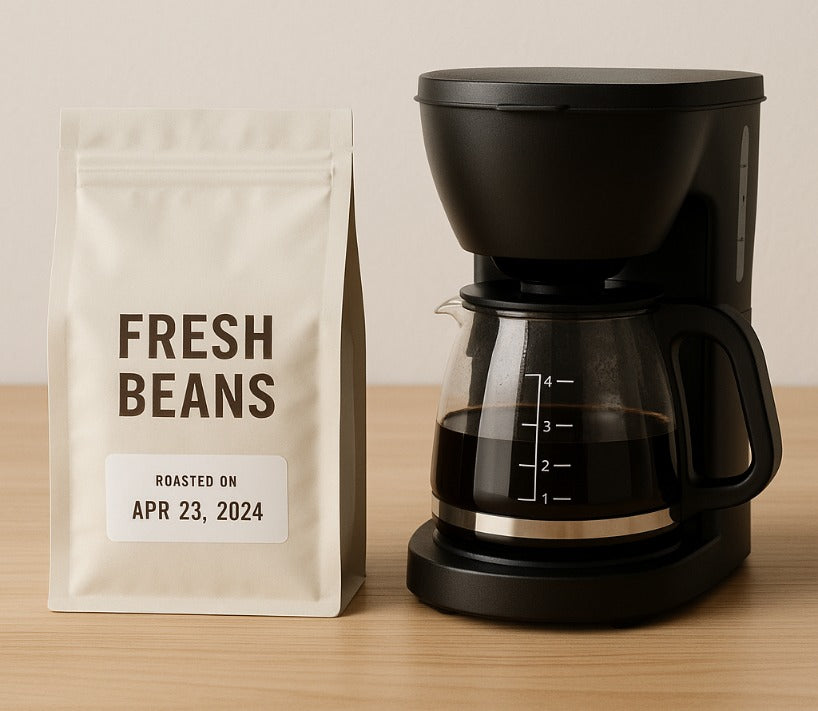Understanding Top Coffee Tasting Notes and How to Tune Your Taste Buds
December 12, 2024 2 min read
Sipping in Stereo: Understanding Coffee Tasting Notes and How to Tune Your Taste Buds
Picture this: you’re curled up in your favorite chair, sipping a fresh cup of what you believe is the best tasting craft coffee at home. Suddenly, someone says, “Mmm, I’m picking up notes of dark chocolate and ripe berries.” You pause mid-sip, eyebrows raised. Dark chocolate? Berries? Are they drinking coffee or describing a box of fancy chocolates? Welcome to the world of coffee tasting notes—where each cup is a story waiting to be told.
Contrary to popular belief, coffee tasting notes aren’t secret ingredients sprinkled in by mischievous coffee elves. Instead, they’re naturally occurring flavors that emerge from a coffee bean’s variety, growing region, processing method, and roast profile. These notes are the aromatic and flavor elements you can detect—think caramel sweetness, citrusy brightness, or a nutty finish.
Why Do They Matter?
Identifying coffee tasting notes is like having a decoder ring for your morning brew. Once you develop this sensory superpower, you can confidently navigate the world of top coffee, whether you’re experimenting with the best coffee bean delivery service or browsing options to order coffee online. Tasting notes help you find that perfect balance—maybe you love a coffee that whispers of brown sugar and plum or one that shouts smoky cocoa flavors.
How to Recognize Tasting Notes:
- Slow Down and Sniff: Start by inhaling deeply before your first sip. That warm, fragrant aroma? It’s your first clue. Chocolate, nuts, or citrus might pop into your mind. Don’t worry if it sounds kooky—coffee pros do this all the time.
- Sip and Swirl: Take a small sip and let it dance around your mouth. Consider sweetness, acidity, and body. Can you sense bright fruitiness or something mellow and smooth? This step might feel a bit like wine tasting, but trust us, no one’s judging.
- Visualize the Flavors: If the coffee reminds you of a dark chocolate bar or a slice of juicy peach, hold onto that image. Flavor references help you remember and distinguish notes over time.
- Practice, Practice, Practice: Developing your palate doesn’t require a chef’s degree. Experiment with different beans, especially from best tasting craft coffee online sources or top coffee delivered right to your door. With each cup, your senses sharpen, and you’ll soon recognize patterns—like how certain origins consistently yield bright, fruity coffees, while others lean toward nutty or chocolatey profiles.
So, what’s the payoff of becoming a tasting-notes ninja? For starters, you’ll be able to choose coffees that align with your unique preferences. Plus, all of our orders come with a free tasting notes cheat sheet. This can make trying out best coffee delivered services or searching for the best tasting craft coffee at home a more personalized adventure. Understanding tasting notes adds a dash of fun to your daily cup—who knew something as routine as drinking coffee could become a flavor-filled quest?
Also in Best Coffee To Buy Online Education

Brewing The Best Coffee at Home: Stop Waiting in Line
November 03, 2025 4 min read
Learn Brewing The Best Coffee at Home with a quick Proof → Promise → Plan system: choose fresh, roast-dated beans, use a simple 1:16 recipe at 200°F, and lock a 4–6 minute routine that beats the drive-thru on taste, time, and cost.

Best Tasting Coffee At Home: Stop Buying “Deals,” Start Buying Value
November 02, 2025 4 min read
Want the Best Tasting Coffee At Home? Skip old ‘deal’ beans. Use fresh, high-scoring, air-roasted coffee and a simple 1:16 plan. This guide shows proof, a clear promise, and a step-by-step plan to order smart, brew better, and enjoy sweeter, cleaner cups—daily.

Best Coffee To Make At Home: Fresh Beans, Simple Plan
October 31, 2025 4 min read
Learn the Best Coffee To Make At Home with a tiny, repeatable system: pick fresh, high-scoring, roast-to-order beans; brew at a simple 1:16 ratio; fix cups with one change at a time. Includes a comparison table, freshness rules, and beginner-friendly FAQs.
